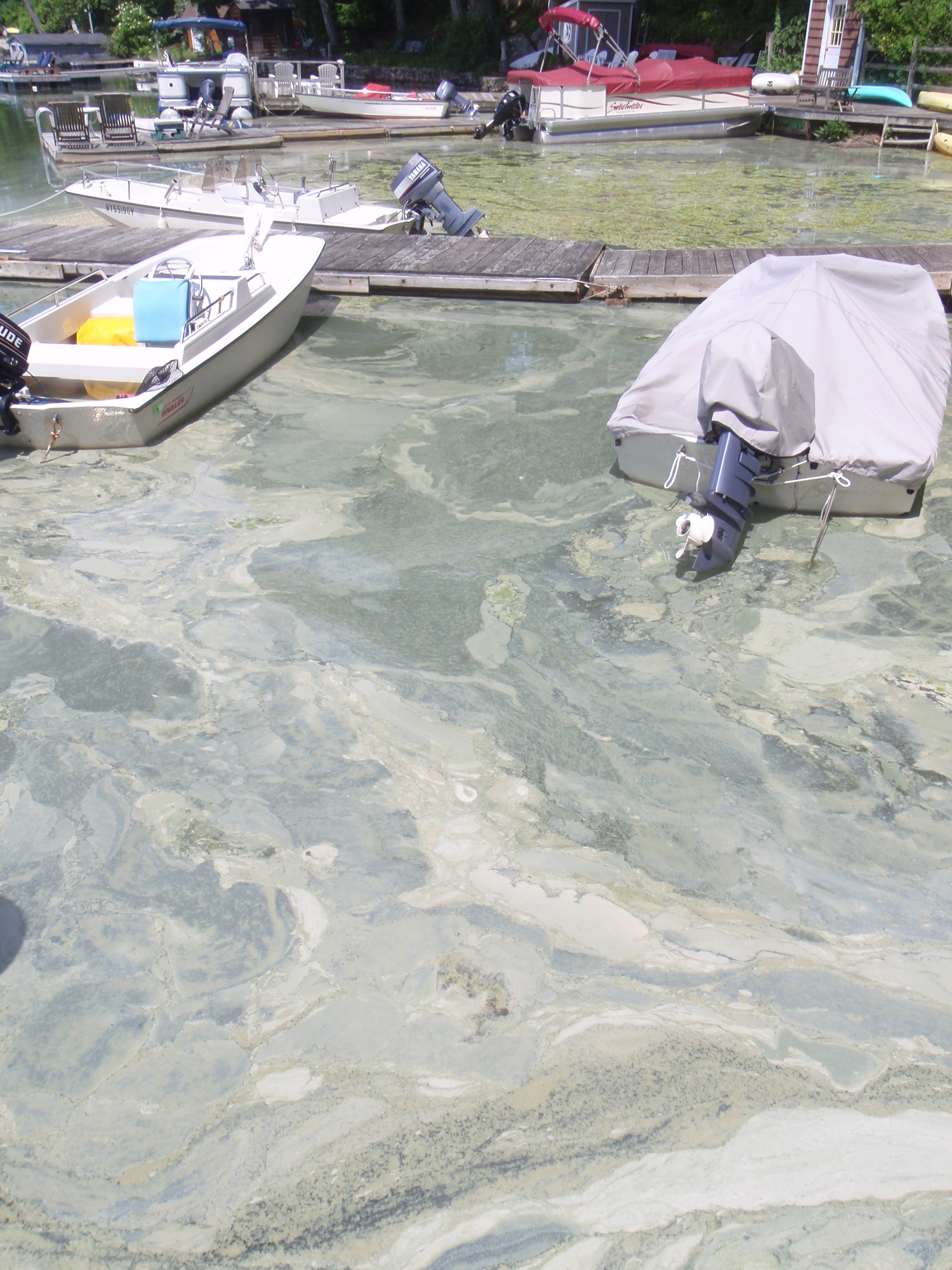Algae are always present in our lakes. The amount of algae is generally dependent upon nutrients, light, temperature, and to some degree predators. Of these, the only lever we can control is nutrients – we need to reduce nutrients to reduce algae. Algae are the base of the lake food web, so if we didn’t have some algae, we wouldn’t have fish. Globally, algae are also an important source of oxygen – it’s estimated that half of the oxygen on earth comes from algae. Many different kinds of algae exist – green, golden, filamentous, diatoms, blue-green and more. When algae are dense in a lake, we call it an algae bloom or algal bloom. Blue-green algae, although lumped in with other algae, are actually a cyanobacteria – a bacteria that can photosynthesize – quite amazing!
Harmful algal blooms
Some algae can make toxins that can be harmful to humans, and when toxins are present, it is called a harmful algal bloom, or HAB. HABs are associated with blue-green algae, but not all blue-green algae produce toxins, and it seems that none of them produce toxins all the time. Scientists are trying to find out what makes these algae “turn on” or “turn off” toxin production. It appears that HABs are happening more often around the world, both in marine and freshwater. This may be related to higher temperatures because of global warming, but no one can say for sure right now.
The Three Lakes Council is participating in NYS research on algae and HABs. Three Lakes Council routinely assesses our lake waters during the summer as part of the CSLAP sampling programs. This feeds the NYHABS website that provides notification of HAB blooms. We don’t visit every shore, and the CSLAP program is every two weeks during the summer. So while we will try to notify those on our google group, we may not see every event. Stay alert for blooms.
What should you do?
If in doubt, stay out. If you see a scum on the surface of your lake that looks like green paint, avoid activities that put you in contact with that water.
Pets may ingest algae. If your pets get in the water, they can ingest the algae when grooming, so rinse them off with clean water.
It’s possible to identify suspected blue green algae blooms by appearance, but appearance alone will not tell if toxins are present. Take sensible precautions. If you see a bloom and you want feedback, contact us at ThreeLakesCouncil [at] gmail.com
Also see the plankton page for more information about the algae and zooplankton in our lakes.
Additional Resources:
Plankton – this page will have links to recent phytoplankton and zooplankton reports
USGS Algae Identification Guide
DEC HAB page and DEC HAB notification page.
EPA page on harmful algal blooms
A 3LC presentation on Goop and Zoop (algae and zooplankton)
See our reports in our newsletters too!
